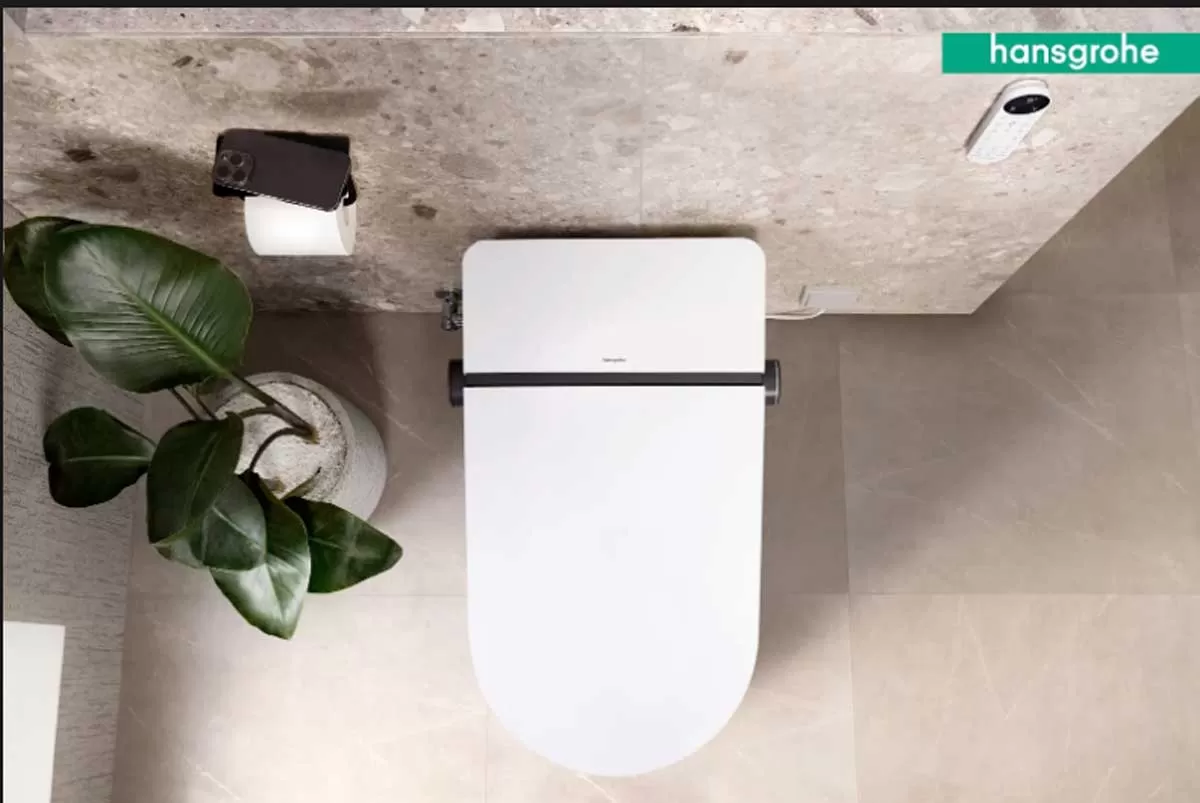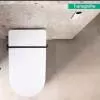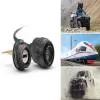Long-distance concrete pumping is a challenge often encountered in the construction of high-rise structures, buildings and vertical or angular shafts in hydropower projects, as well as for concrete lining of small diameter tunnels for various applications. A practical solution to overcome this challenge is presented in consultation with Schwing Stetter India.
Long-distance concrete pumping can be applied in horizontal and vertical directions. Although the basic principles are identical for both, the problem areas differ to some extent, thereby requiring application-specific solutions to achieve the desired deliverables.
Long-distance pumping in horizontal direction has been achieved up to a record distance of 4.432 km inside the tunnel at Sainj Hydroelectric Project executed by HCC Ltd, and many reports have already been published regarding the same. However, today, the focus of this discussion is the challenge of pumping concrete to heights in excess of 1,000 m.
Major challenges
In vertical pumping, major challenges can be grouped as below:
- Reaching the concrete to the required height.
- Achieving the required productivity or pouring rate in terms of cubic metre per hour.
- Spreading the concrete over the entire plate area of the structure.
- Working with different grades of concrete.
- Maintaining the consistency of the concrete mix.
- Overcoming the impact of back pressure created by the vertical column of concrete.
- Minimising concrete wastage.
- Cleaning of pipelines after every pour cycle.
- Safety at heights.
Equipment solutions to overcome the challenges
The first step to solve the problem is selecting the specifications of equipment and accessories for executing the work at hand. Details of the selection process for each item is described below:
- Concrete pump: Vertical pumping to heights entails selecting a high-pressure concrete pump with sufficient delivery capacity to achieve the planned pouring rate. To ascertain the specifications, it is necessary to refer to a nomograph of the pump. Based on the nomograph, we have to select the pumping pressure in bar and calculate the power required. A typical example of pump specifications derived from nomograph:
- Pipe line diameter: There are two types of pipelines that can be used in high-rise pumping:
- Standard DN 125 mm or DN 150 mm pipes and bends, connected together through air tight couplings and clamps. DN 150 mm pipe size is most preferred for high-rise pumping to heights above 500 m.
- Large diameter vertical columns connected to the pump output through standard DN 150 mm pipes for bottom pumping method.
- For diverting concrete supply to different areas, one can use an integrated distributor or innovate by using swing over bends.
- Shutoff valves: It is important to understand that in vertical pumping, the weight of the vertical column of concrete creates a huge back pressure on the concrete pump. This prevents the pump from operating and delivering concrete. To overcome this issue, shutoff valves are positioned in line with the pipeline. The opening and closing of this valve is synchronised with forward and retraction of the pumping pistons.
- End hose is a reinforced rubber flexible pipe five to six m long. This assists the worker to spread the concrete in a localised area.
-
Cleaning system: Huge volumes of concrete are pumped through the pipelines or columns as the case may be. Therefore, the traditional method of cleaning by gravity after each pour does not apply. It is necessary to pump water at high pressure in the pipeline by either converting the existing concrete pump into a water pump through a changeover system or using a separate concrete pump for the purpose. In both cases, it is necessary to insert a ´go devil´ or ´pig´ in the pipeline before the water. This is a rubberised insert that wipes the residual concrete from the inner surface of the pipeline as it is forced through by water pressure. At the end of the pipeline there is a catcher, which collects the pig as it comes out of the pipe.
Concrete placing:
- Manual placement is done in small areas like the inside of a shaft.
- Self-climbing boom placer: This equipment climbs upwards through hydraulic cylinders and is equipped with a multi-fold, hydraulically operated arm and can rotate 3600 to place the concrete. The concrete supply is connected to the bottom of the placer and the length of the same is increased according to the requirement.
- The mechanical spreader also performs a similar function as the boom placer but all operations are mechanical. It is placed above the reinforcement bars on the slab and has to be lifted to the next level from time to time, either manually or by using a tower crane.
Sequence of action plan
1. Conduct lab and on-site trials to establish a good, workable concrete mix. Ensure that the concrete mix properties like plasticity, cube strength, slump and other factors are commensurate to the job requirement.
2. Route and lay pipelines for maximum coverage. Give special attention to secure anchoring of pipes, because pumping pressure is high. Second, the number of bends has to be minimised as bends create back pressure.
3. Set up the pumping station at a strategic location where the concrete and water can be fed to the pump in line with the work cycle requirements.
4. Work out the number of transit mixers required and their logistics plan for feeding concrete to suit the target placing speed.
5. Monitor the workability of the concrete. Before feeding every batch, carry out the slump test to ensure constancy of concrete.
6. Concrete blockage in the pipeline or pump is the most common occupational hazard. Be ready at all times to deploy an emergency preparedness plan, resources and designated manpower to address this situation.
7. Make the team clearly understand that unless and until the work site is completely ready to receive concrete, no work will be done. Establish a responsibility matrix to ensure timely completion of all preparatory activities like laying and tying reinforcement bars, placing and securing formwork, ready availability of concrete vibrators, etc.
8. Once the above are in place, the operation sequence is:
i. Inspect the equipment setup.
ii. Double-check all connections to airtight and ensure there are no leakages.
iii. Feed the concrete into the pump hopper.
iv. Spread the concrete evenly over the entire area. Change pipeline connections as required.
v.After the pour is over, disconnect the pump outlet and insert the go devil in the pipeline.
vi. Pump fresh water in the pipeline till the go devil drops in the catcher. Immediately stop water pumping.
vii. Close the shutoff valve and let the water column stand in the pipeline for 30 minutes.
viii. Connect the return pipe to the tank, open the shutoff valve and allow the water in the pipeline to flow back into the tank.
ix. Dispose the slurry contaminated water at a suitable location. Note: By this cleaning method, concrete wastage can be minimised up to 0.5 cu m per cycle.
x. Repeat the cycle i to ix.
Occupational safety aspects
- Pipe leakages and frosting of concrete: In case air leaks into the pipeline, concrete crystals are formed, resulting in poor quality. To avoid this problem, it is essential to use good quality rubber sealing rings in the joints, proper alignment of pipes and use of lever locking type pipe clamps.
- Concrete blockage: Generally, blockages occur owing to low slump (recommended slump is 180 mm), wrong additives or sometimes insufficient pumping pressure owing to usage of rod side instead of piston side in the pump. Proper quality control of concrete mix and correct usage of the pump will avoid the problem. In case blockage occurs, dismantle the pipeline and replace with standby pipeline to continue operations. After dismantling each pipe, first break the concrete inside the pipe with a small vibrating chisel and then use chemicals to completely clean the pipes to make them ready for next use. A word of caution: Replace all seals and do not hammer the pipes to dislodge the solidified concrete.
- Fear of heights: Take a vertigo test of all the workers and team members involved in the job. Only those who pass the test should be entrusted with the job.
- Pump is delivering concrete at high pressure: The hydraulic pressure inside the system is high to the extent that even a tiny leak can cut through a man´s feet! Ensure that all workers wear PPE clothing, safety shoes, etc, and are never allowed to stand over the pump during operations.
- Avoid using old or worn out or bent or spurious pipelines to prevent pipe burst and consequential injuries of the workmen. The minimum thickness of the pipe should be more than 5.5 mm at all times.
The Empire State Building, Taipei 101, Petronas Towers and Burj Khalifa are the most visible and iconic examples of high-rise concrete pumping. However, there are hordes of unsung projects, especially in the hydroelectric sector where concrete has been successfully pumped to heights even greater than 2,000 m and there are many more to come.
| Model: SP8800-18HDDR, 440 kW, 243 bar with the following technical details: |
| Technical parameter |
11,000 |
| Diff, cylinder |
180/150 |
| Diesel engine rating (kw) |
419 |
| Diesel engine type |
TCD 2015 V08 |
| Nominal speed (rpm) |
2,100 |
| Pumping cylinder DN x stroke (mm) |
180 x 2,000 |
| Displacement (litre) |
50,9 |
| Diff cylinder DN x stroke (mm) |
150/90 x 2,000 |
| Diff cylinder drive |
KS/SS (KS = piston side, SS = Rod side |
| Max stroke count per min |
21/31 |
| Basic stroke adjustment |
18/28 |
| Max theoretical concrete output (m3/hour) |
63/94 |
| Max concrete pressure (bar) |
243/156 |
| Feeding hopper capacity (litre) |
600 |
| Tare mass (inclusive hydraulic oil and fuel) (kg) |
10,000 |
| Delivery line DN (mm) |
150 |


















